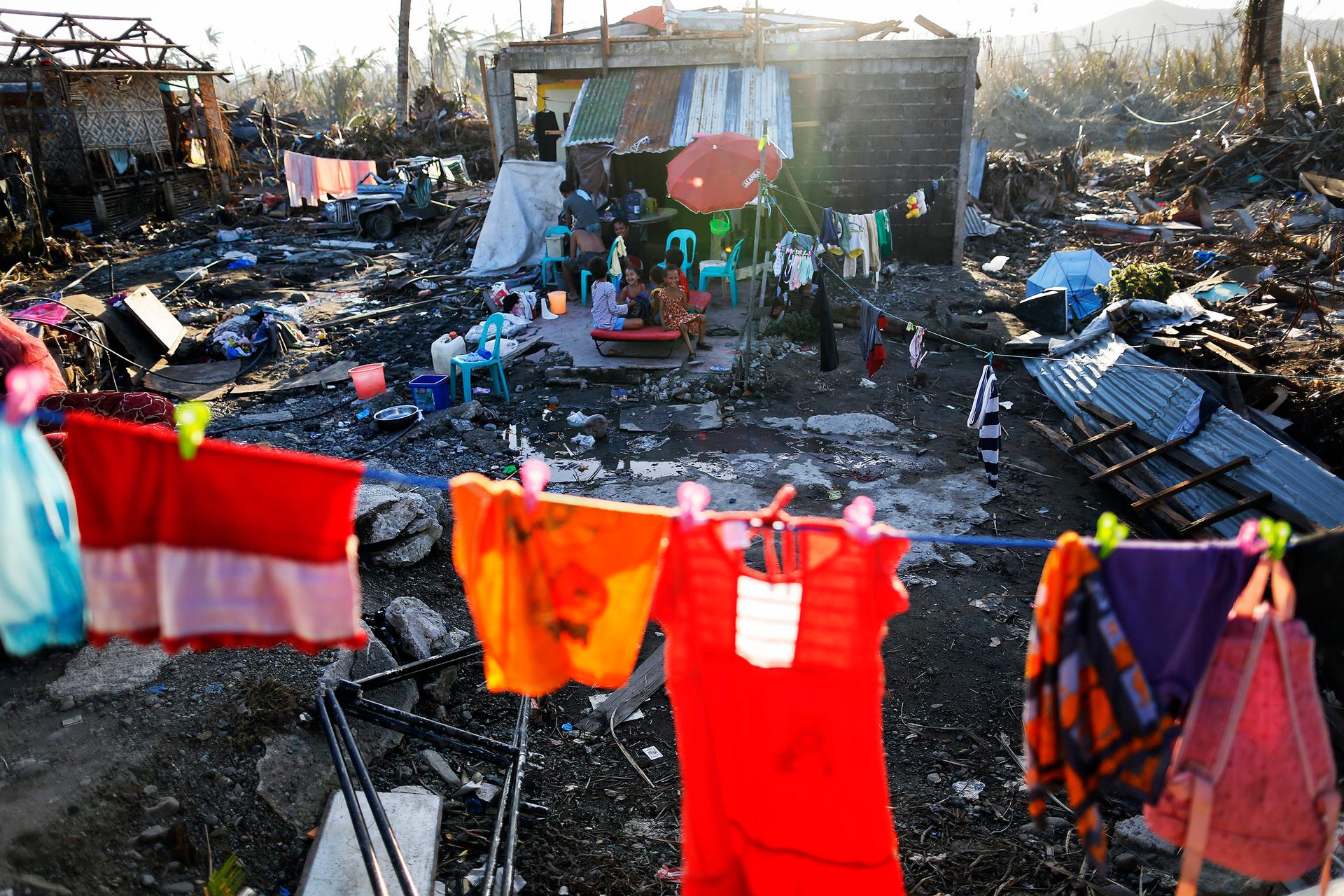‘I’ve never walked through an area with so many bodies’
Survivors pass time outside the ruins of their homes, destroyed by Super Typhoon Haiyan in Palo, south of Tacloban, on Nov. 15, 2013. Bodies lay uncollected and thousands tried desperately to evacuate stricken communities across the central Philippines.
The city of Tacloban held its first mass burial on Thursday — a sad, but important step on the road to recovery after Typhoon Haiyan.
In outlying villages, bodies still dot the landscape. Survivors say you know they are out there because of the smell.
Patricia Evangelista is a reporter for Rappler, a self-described social news site, based in Manila. She has covered disasters and typhoons in the past, but says those storms don't compare to anything she's seen in Tacloban.
"I've never walked though an area with so many bodies gathered on the road," she says. "You see women washing their dishes side by side with a body. It could be someone they knew or someone they didn't know, but it seems normal to them now. It's very bad."
Officials have increased their estimates of the death toll to 3,631 — but it will likely climb further.
Looting is another problem. Evangelista says it's become a family activity, because there's no other way to survive.
International aid is just starting to make its way into the country. Many far-flung areas of the Philippines are dependent on the food drop-offs. Getting water is still difficult. And power in many areas is out and expected to be out for some time.
With very dark nights, families need flashlights just to keep watch over what little goods they have left.
